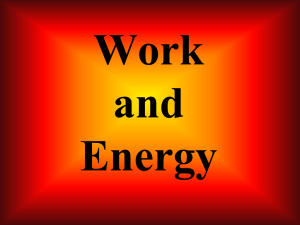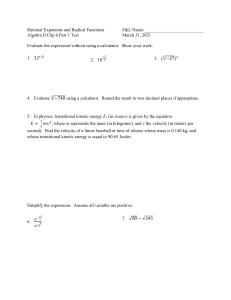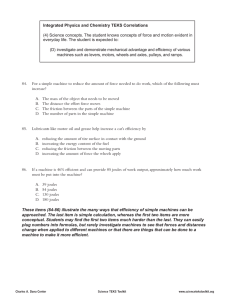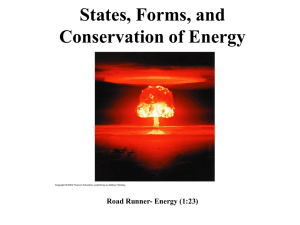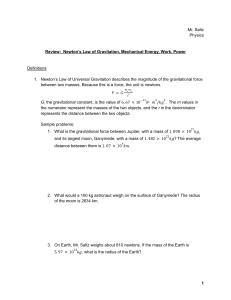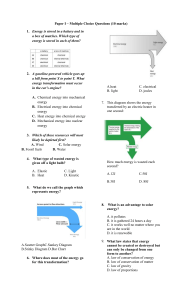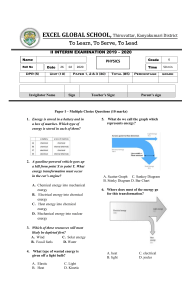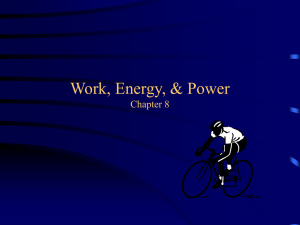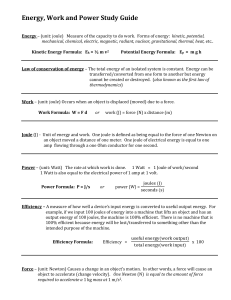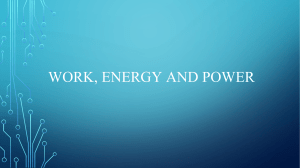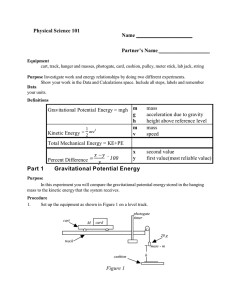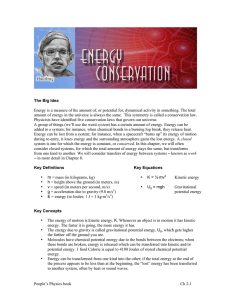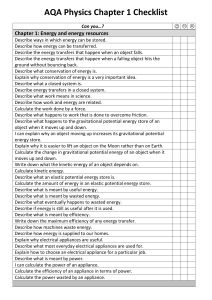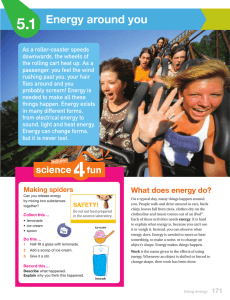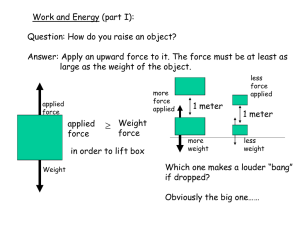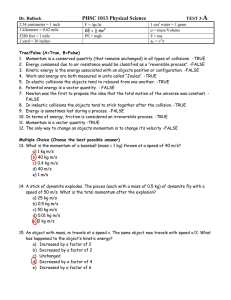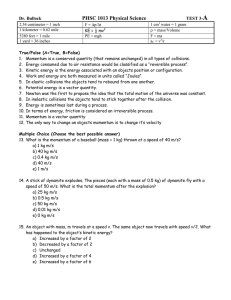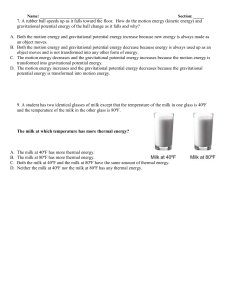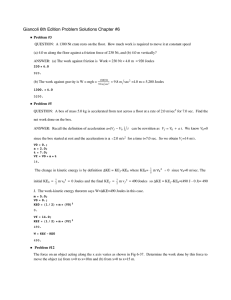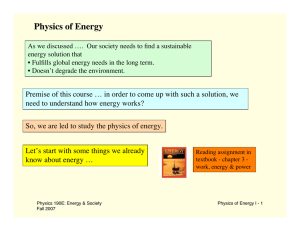Chapter 7 Energy
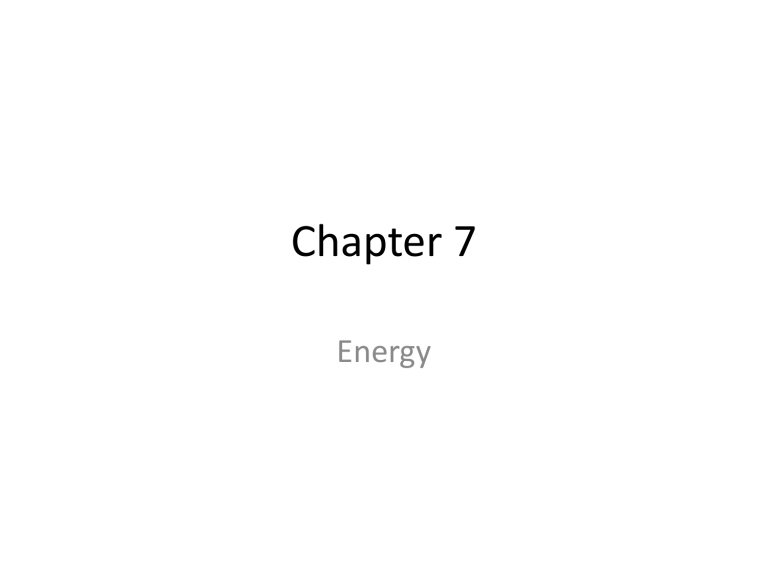
Chapter 7
Energy
Work
• Work = force * distance
• Work = mass * acceleration * distance.
• Units are Joules (J)
• In a equilibrium situation (where nothing is moving) work is zero.
Power
• Power = work done / time
• Units are J/s or watt
• Power is a measure of who fast work is done.
• A lot of work done over a long time makes for low power. A little bit of work done in a very short time makes for a lot of power.
Mechanical Energy
• Where do we acquire the ability to do work?
• Attracting bodies, molecular compression, rearrangement of electrical charges, ect.
• Mechanical Energy can be classified as:
– Kinetic Energy
– Potential Energy
Potential Energy (PE)
• Energy in a stored state.
• Units of Joules (J)
• This stored energy could be chemical, gravitational, stretched or compressed springs.
• Gravitational Potential Energy = weight*height
• PE = mgh
Kinetic Energy (KE)
• Energy in motion
• Units of Joules (J)
• KE is dependant on mass, but is more dependant on velocity.
• KE = 0.5 * mass * speed 2
Work-Energy Theorem
• Work =
D
KE
• Work is not a form of Energy, but a means by which it is transferred from one system to another.
• This means the net work, which is based on the net force.
• Applies to accelerating and decelerating objects.
Conservation of Energy
• Energy cannot be created or destroyed. It can only be changed from one form to another, but the total energy is the same.
Machines
• Is a device for multiplying forces.
– Levers
– Pulleys
• Work in
= Work out
• All machines that multiply force due so at the expense of distance.
Efficiency
• In the real world machines cannot use 100% of the energy put into them
• Efficiency = Useful energy / total energy input

